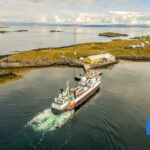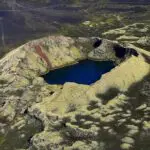Accessibility in Reykjavik is becoming increasingly better. Thanks to local initiatives to improve accessibility, the city is gradually removing barriers, ensuring everyone can explore its vibrant culture, rich history, and stunning natural backdrops regardless of mobility. This move towards inclusivity is not just about adding ramps and modifying infrastructure; it’s about embracing a philosophy that welcomes all visitors to experience the best of Reykjavik.
The Reykjavik City Card is a fantastic way to explore everything the city offers. You can opt for a 1-, 2-, or 3-day pass, which provides access to all city museums and discounts. We highly recommend checking out our blog post dedicated to the Reykjavik City Card. It provides all the essential details you need to know about this fantastic card.
Ramp Up Reykjavik
At the core of Reykjavík, the “Rampa Upp Reykjavík” campaign is reshaping the city into a place that welcomes everyone. Led by Haraldur Þorleifsson, inspired by his own experiences with mobility barriers, this campaign has quickly become a beacon of progress toward inclusivity.
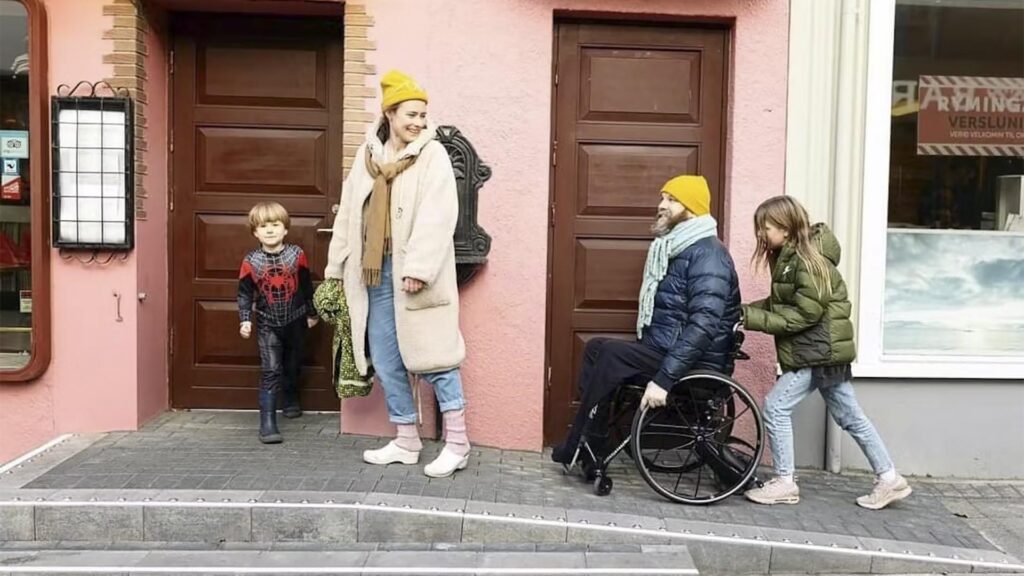
The initiative was born from the essential need for a city where everyone, including those reliant on wheelchairs and other mobility aids, can navigate freely. Haraldur, personally confronted with the city’s accessibility issues, became a catalyst for change, advocating for a city without the barriers he faced.
Starting with the ambitious goal of adding 100 ramps around Reykjavík, the project swiftly surpassed expectations in both the scale of implementation and the positive ripple effects through the community. The swift progress and widespread support showcased the project’s viability and the critical demand for improved accessibility.
Leveraging this success, Haraldur set his sights broader, announcing “Rampaðu Upp Ísland” to introduce 1,000 new ramps nationwide over four years. This expansive effort aims to make every part of Iceland accessible, illustrating a profound commitment to creating a barrier-free nation for all.
Reykjavik City Museum
The Reykjavík City Museum is dedicated to making history and culture accessible to everyone across all five of its unique sites. This commitment is evident in their thorough approach to providing access for individuals with special needs, ensuring that all can enjoy exhibitions and events.
Árbær Open Air Museum
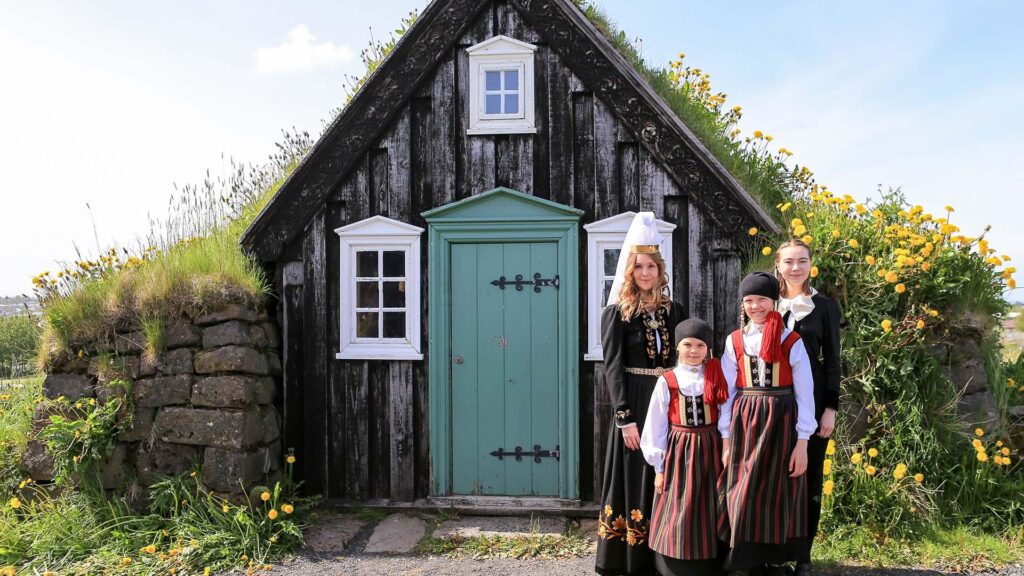
The museum stands out for its immersive historical experience. This expansive open-air venue showcases over 20 buildings, each with its own story, relocated mainly from Reykjavík’s town centre to give visitors a glimpse into the past. The variety among these structures—from cosy rooms to grand halls—highlights the diversity of Icelandic life through the ages. Staff, easily identifiable in period costumes, are always ready to assist, enhancing the museum’s welcoming atmosphere.
For visitors planning their trip, parking is conveniently located across from the museum entrance, with additional blue-badge parking nearby. The entrance path is equipped with a snowmelt system, making it accessible year-round.
Public transport options include buses 12 and 24, which stop right next to the museum, and buses 16 and 5, both a short walk away. Once at the museum, entry is through the ticket office, which leads to a central town square surrounded by historical houses and accessible paths. It’s important to note that some paths are gravel, and in wet conditions, they can become slippery. However, the museum offers solutions like courtesy crampons to ensure safety.
Inside the museum, several houses, such as Landakot, Lækjargata 4, and The Granary, have been adapted to improve access. Landakot, for example, offers heated pavements and a staff-operated lift to the main exhibition floor, which includes accessible toilets. Lækjargata 4 and The Granary have made accommodations with portable ramps for wheelchair access. However, it’s worth noting that some areas, like The Granary’s upper floors, may require staff assistance.
Aðalstræti Exhibition
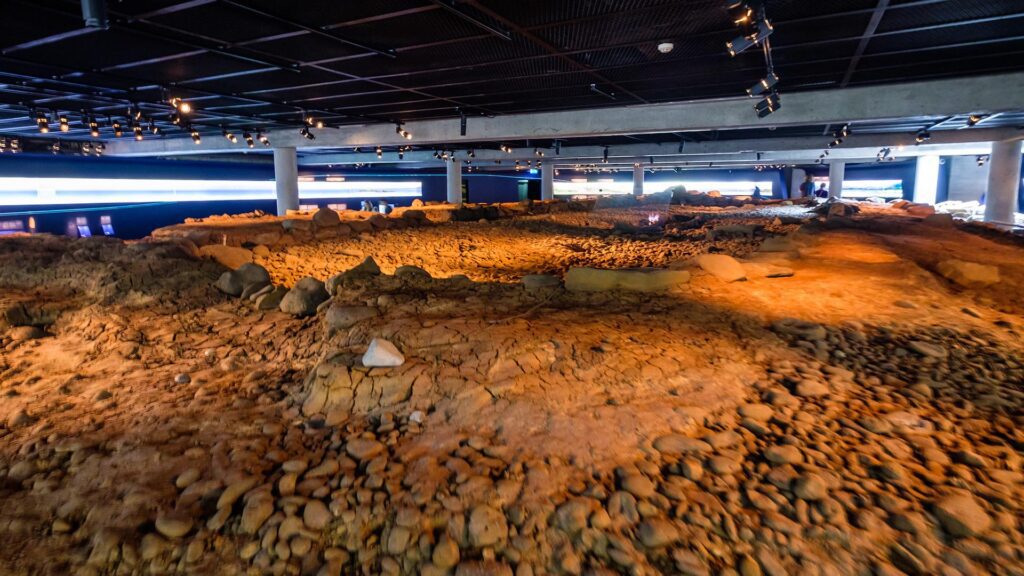
Discover Reykjavík’s history from its beginnings to today at Aðalstræti, with entrances at numbers 16 and 10. An underground pathway connects the old and new parts of the exhibition, offering access from both locations.
At Aðalstræti 16 (formerly the Settlement Exhibition), you’ll find an exhibition hall, educational spaces, family-friendly areas, and a shop. Aðalstræti 10 adds more exhibits, a ticket booth, and additional facilities accessible from Brattagata.
This quiet, three-floor exhibition features nature and machine sounds and is wheelchair-friendly, with convenient entry and seating. However, Aðalstræti 16 is dim and has uneven flooring in spots. Expect a visit to last between 1-2 hours.
Parking is available on Túngata, at City Hall’s underground lot (2 minutes away), and at Mjóstræti parking garage (4-5 minutes away), with fees. There are designated spots for buses and taxis near City Hall and Aðalstræti 16 for drop-offs. Public transport stops near City Hall (2 minutes away) and Lækjargata (5 minutes away) provide easy access.
Both entrances are wheelchair accessible, with automatic doors and no steps. The building offers elevators for easy movement between floors. Facilities include accessible restrooms and seating throughout. Pushchairs are available for loan.
No picnic or café area is provided, but the exhibition engages visitors with audio and olfactory experiences. Quiet rooms are available for downtime if needed.
Reykjavik Museum of Photography
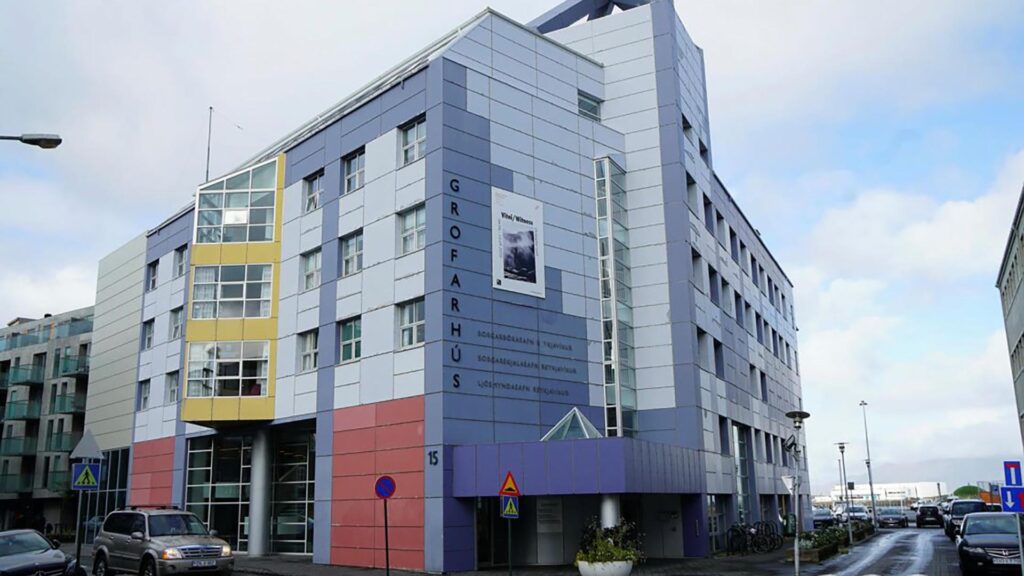
Located atop the Reykjavík City Library, the Reykjavik Museum of Photography showcases a mix of short and long-term photography exhibits in a serene setting, occasionally enhanced by multimedia installations. A quiet area with seating and books offers a peaceful retreat near the reception.
The museum caters to disabled visitors with convenient drop-off/pick-up options, and the visit generally takes about 15 to 45 minutes. Entry is through the library’s main entrance, leading to an elevator and stairs to the museum on the sixth floor, where automated doors and obstacle-free pathways ensure accessibility. Facilities include a reception, shop, interactive displays, and seating.
Parking is available behind the building and nearby, with free options in downtown Reykjavík requiring a short walk. Public transport is easily accessible, with bus stops at Lækjargata and Mýrargata.
The venue is wheelchair-friendly, offering smooth access, a courtesy wheelchair, and designated parking. However, the sixth-floor toilets are not wheelchair accessible. No regular guided tours are provided, but special tours for exhibitions and visitors with impairments are occasionally available. Guide dogs are welcome.
Reykjavik Maritime Museum
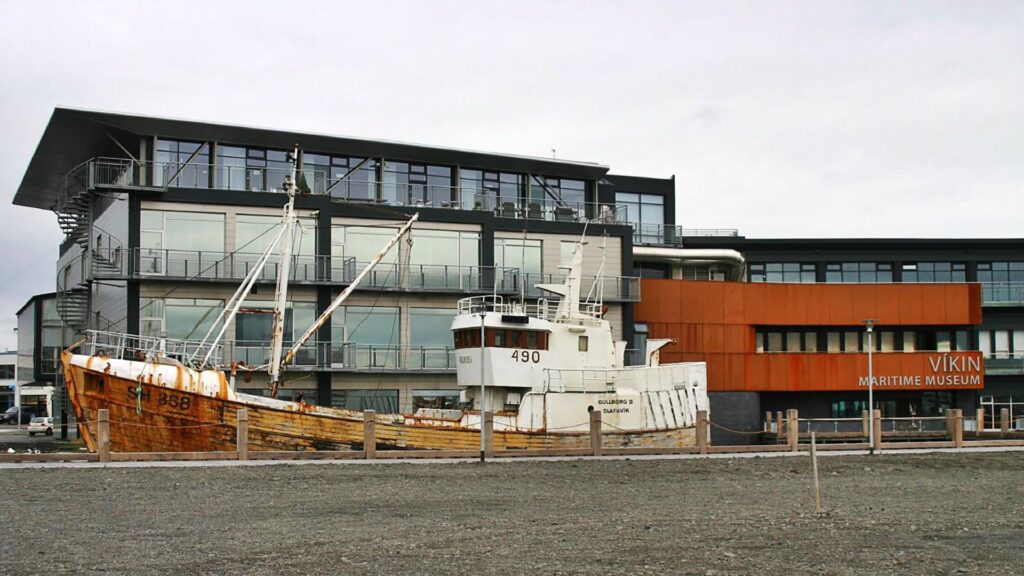
The Reykjavik Maritime Museum, nestled on Grandagarður 8 across from quaint, renovated fishing sheds now serving as shops, offers access from its main entrance on Grandagarður and a secondary one by the harbour. The museum’s layout includes a reception area with a ticket office and a shop, leading to two main exhibitions: a permanent one on the second floor and a temporary one on the ground floor. The latter sometimes features intense sensory elements like bright lights and sound that might affect sensitive visitors. Seating is available for rest.
Designed with accessibility in mind, the museum provides a lift for easy navigation between floors. However, with its steep, narrow pathways, the historic ship exhibit is inaccessible for those with mobility issues or claustrophobia.
Parking is straightforward and available at both entrances. Public transport is also convenient, with bus service 14 stopping nearby. Facilities include accessible toilets on the second floor, outdoor picnic benches, and no courtesy strollers, though personal ones are welcome.
Guided tours and additional information can be obtained by contacting the museum directly. The museum also offers a courtesy wheelchair and has allocated blue-badge parking. Indoor seating mimics the outline of Iceland, adding a unique touch, and lifts cater to all visitors. However, those with sensory processing sensitivities should know potential stimuli from specific exhibits. Special opening hours are occasionally scheduled to accommodate visitors needing a quieter environment.
Viðey Island
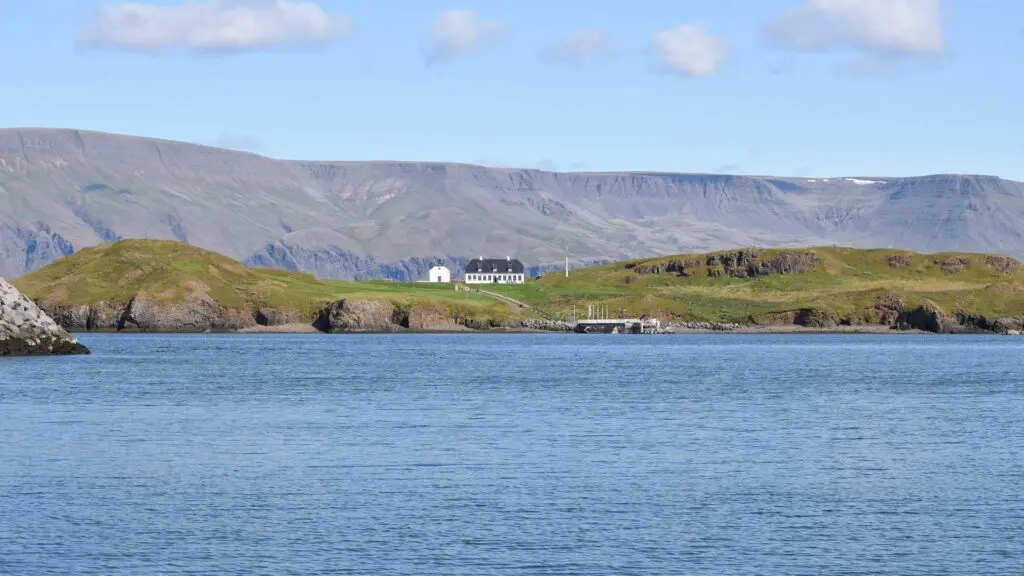
Viðey Island, accessed by ferry from Skarfabakki Harbour, offers limited mobility due to its steep gangway. The island boasts historic sites, outdoor art, and beaches, but visitors should expect windy conditions. Parking is available at Skarfabakki, and public transport options include bus service 16 on weekdays and buses 12 and 14 on weekends. It requires a short walk to the harbour.
Ferry tickets can be purchased at Skarfabakki, the Old Harbour, Harpa, or online through Elding. Picnic and toilet facilities are located at The Stable, Viðeyjarnaust Cabin, and The Old School House. Visitors must bring their own supplies, as the island’s restaurant and cafe are only open in summer and have limited accessibility.
A free map guides visitors through Viðey’s trails to attractions like the Imagine Peace Tower and Richard Serra’s Milestones. Safety precautions are advised, especially near steep cliffs and rocks.
Access for people with disabilities includes a ferry service with a handrail gangway and staff assistance for boarding. However, the gangway on Viðey presents challenges, and there are no ramps for the ferry or dock. There are no courtesy wheelchairs on the island, but benches and accessible picnic spots provide resting points. While some buildings have wheelchair ramps, no lifts are installed.
National Museum of Iceland
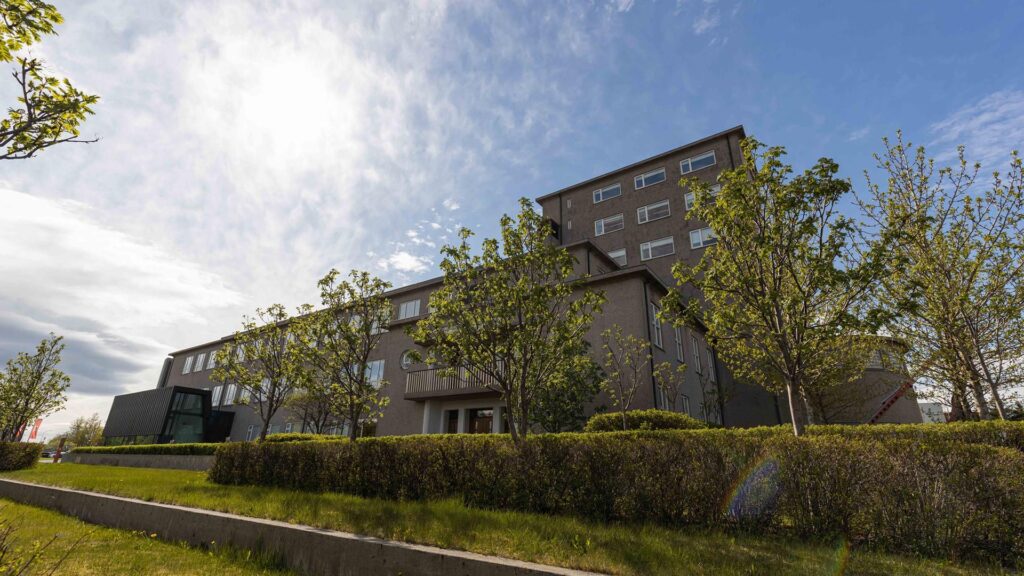
The National Museum has twice been nominated for innovation awards: once for audio description for the visually impaired in connection with a photography exhibition and once for a memory room located on the 2nd floor, used for memory work with elderly individuals experiencing memory loss.
The main entrance on the south side has no threshold and automatic sliding doors. Baby strollers are available for loan at the reception. Parking is accessible from Suðurgata, with designated spots for disabled individuals near the principal and staff entrances. The Lecture Hall is wheelchair accessible via ramps from the entrance. Folding chairs are available, and information can be obtained at the reception.
Wheelchairs can be borrowed at the reception. Audio guides are offered in various languages, including Icelandic, English, Danish, German, Italian, French, Swedish, Spanish, Mandarin, and Polish, with unique versions for children in Icelandic and English. Elevator access is provided from the ground floor to the basement and between floors in the exhibition halls. Restrooms include facilities for disabled individuals, with door openers for easy access. Tactile objects are available in the family room, Stofa.
Reykjavik Art Museum
Hafnarhúsið
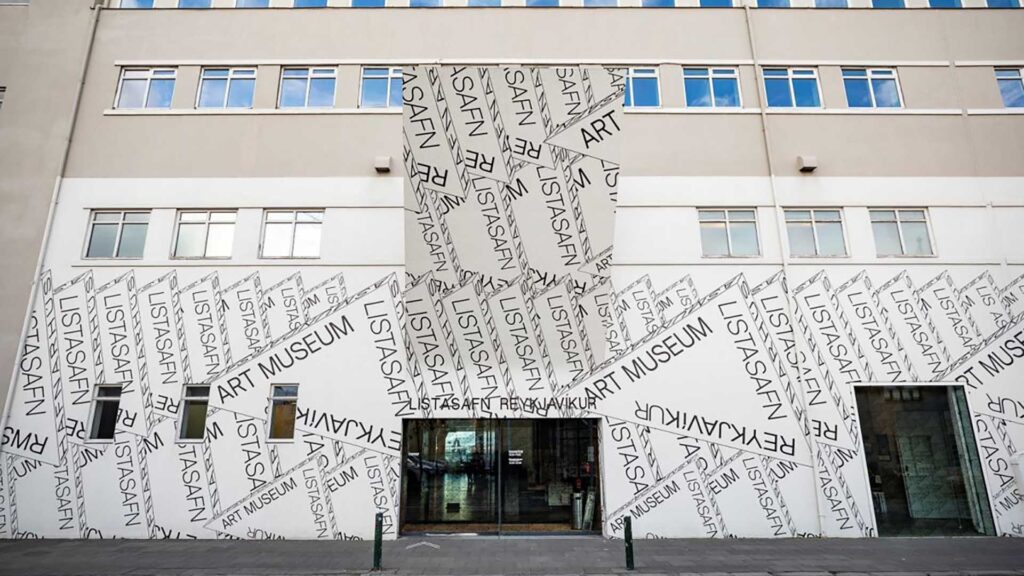
Hafnarhús offers convenient access, with automatic sliding doors welcoming visitors from Tryggvagata. Upon entry, the reception desk is readily accessible on the left-hand side. Parking options include spaces behind Hafnarhús, accessible from Tryggvagata, and at Hafnartorg and Vesturgata 7 parking garages, managed by Reykjavik City. Bicycle stands are available for cyclists at Grófin, adjacent to the Reykjavik City Library. Public transport users can reach the museum via bus lines 1, 3, 6, 11, 12, 13, and 14.
Visitors will find storage facilities and lightweight stroller lending services inside the museum. However, large strollers are not permitted within the exhibition halls. Lockers for bags and backpacks are located to the right of the entrance, with a coat check available inside. Restroom facilities are easily accessible on both the ground floor and the 2nd floor, with additional unisex options on the 2nd floor. An elevator near the entrance ensures seamless mobility between all museum floors.
Visitors can find seating areas scattered throughout the museum, with additional seating near the café on the 2nd floor. A multi-purpose room without thresholds offers versatility for various activities and gatherings on the ground floor. Guided tours can be arranged with museum staff, providing deeper insights into the exhibitions. One wheelchair is available on the ground floor, and further assistance is provided at the reception desk.
Accessible parking spaces are conveniently located at the Grófin parking to the left of the main entrance. Lastly, the museum offers a tranquil area on the 2nd floor, complete with seating and refreshments, offering a serene space for relaxation and contemplation amidst the exhibits. Guide dogs are welcomed, and sign language tours can be arranged upon request.
Kjarvalsstaðir
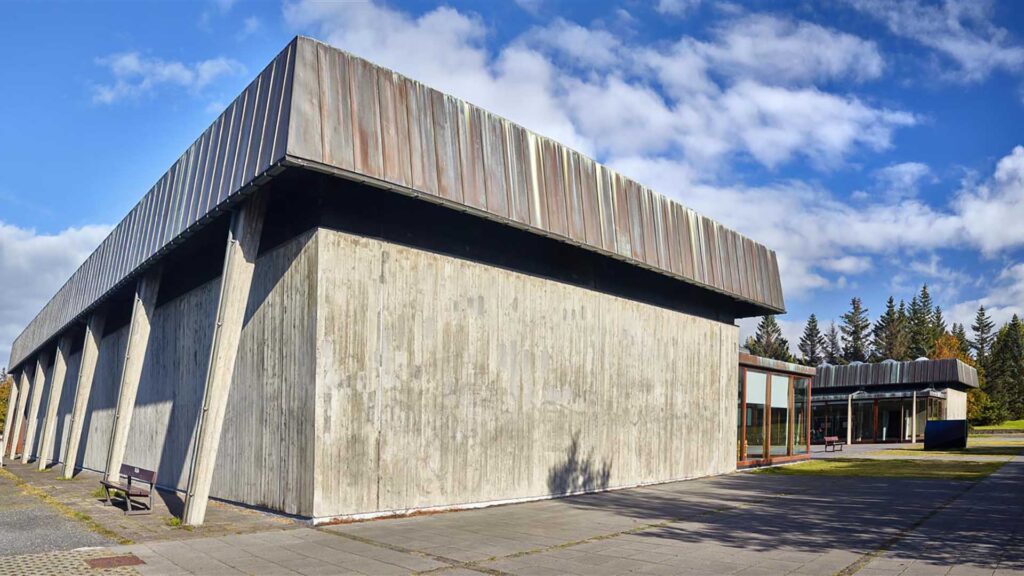
Visitors enter through the main entrance on Flókagata, where automatic sliding doors with ramps provide easy access. Upon entry, a reception area welcomes guests, accompanied by a convenient museum shop. Ample parking spaces are available in front of Kjarvalsstaðir for visitors arriving by car.
For those using public transport, bus lines 13, 1, 3, 6, 11, and 18 serve the area. Bicycle stands are conveniently located at the entrance of the central building, and stroller storage facilities are provided at Kjarvalsstaðir. Additionally, lightweight strollers are available for loan. Lockers and coat racks are available near the reception for storage convenience.
Seating areas are provided along the hallway to the right of the reception, offering visitors a chance to rest and relax. Kjarvalsstaðir’s exhibitions vary regularly, with seating available in all exhibition spaces. Portable museum stools are provided at the reception for added comfort. A cafeteria within the premises serves food and beverages, with outdoor seating available on sunny days. Adjacent to the cafeteria is a family room equipped with books and activities related to current exhibitions.
Kjarvalsstaðir has been open to the public since 1973, and wheelchair ramps are provided at both entrance doors. Two designated parking spaces for visitors with disabilities are in front of the main entrance. Additionally, one wheelchair is available for loan at the reception desk. Specialized guided tours in sign language are offered by appointment for visitors with hearing impairments. In contrast, special tours are provided for the blind and visually impaired, with schedules announced in advance. Guide dogs are welcome at the museum.
Ásmundarsalur
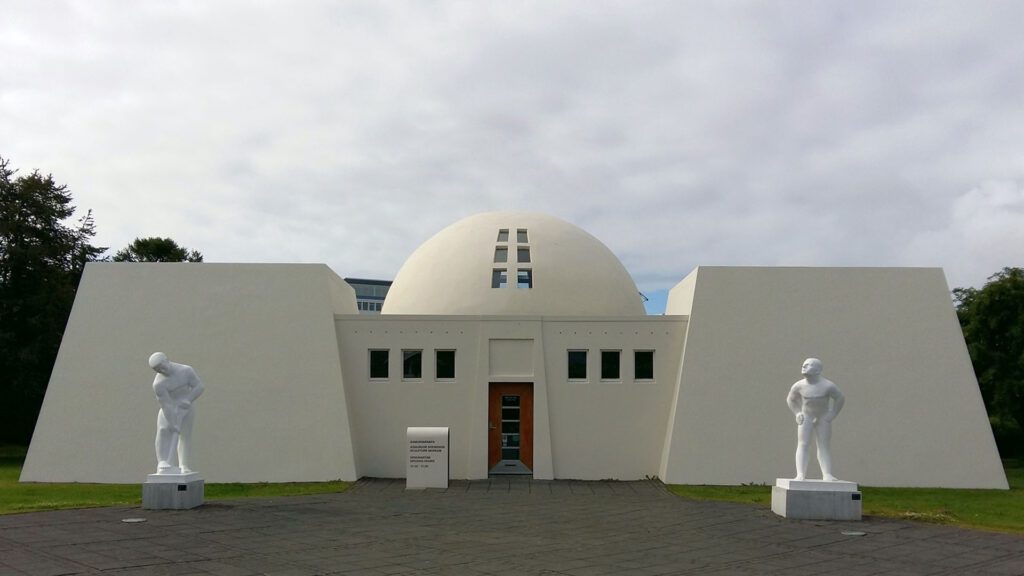
Ásmundarsafn welcomes visitors with automatic doors and easy access. Parking is available in front of the building, and bicycle stands are provided nearby. Several bus lines serve the area for convenient public transportation. The museum offers stroller storage and lockers for bags. Seating is available near the reception, and refreshments like coffee and water are provided.
Ásmundarsafn ensures accessibility with a low threshold entrance and a wheelchair lift to the storage area. Designated seating is available for visitors with mobility impairments, and parking spaces are provided for individuals with disabilities. Regular guided tours are offered and can be arranged in advance. The museum strives to accommodate various groups, including those with sensory processing disorders, to create an inclusive environment.


